These are the various works, great or otherwise, on which I'm currently engaged, with a few past glories at the end.
.jpg) When I began academic research, I thought I was going to work on Anglo-Saxon England. My M. Phil. dissertation, however, was on Pictish Scotland, and my doctorate wound up being on the frontier of Charlemagne's kingdom in the Pyrenees and the area that is now Catalonia as part of his Carolingian Empire. While I was looking for an academic post, however, I wound up cataloguing coins for a living for five years, bringing me firmly into the world of numismatics. When I stopped that, I spent three years in Oxford standing in for a prominent Anglo-Saxonist, trying to keep my grip on Catalonia at the same time, but teaching pretty much everything, and then after a year of doing that at Birmingham with an added specialism in the Apocalypse, ran a Byzantine coin collection for a year. I was also publishing stuff about the digital humanities in there for a while, based on my work with databases and my profile as a blogger. Then I got to Leeds and basically disappeared under teaching for two years and only surfaced in late summer 2017, since when I have been very busy, and the results really only began to emerge in 2019. And then, of course, there was this global pandemic! So my progress with any of the below has not been what I might have wished, but the aspirations remain strong!
When I began academic research, I thought I was going to work on Anglo-Saxon England. My M. Phil. dissertation, however, was on Pictish Scotland, and my doctorate wound up being on the frontier of Charlemagne's kingdom in the Pyrenees and the area that is now Catalonia as part of his Carolingian Empire. While I was looking for an academic post, however, I wound up cataloguing coins for a living for five years, bringing me firmly into the world of numismatics. When I stopped that, I spent three years in Oxford standing in for a prominent Anglo-Saxonist, trying to keep my grip on Catalonia at the same time, but teaching pretty much everything, and then after a year of doing that at Birmingham with an added specialism in the Apocalypse, ran a Byzantine coin collection for a year. I was also publishing stuff about the digital humanities in there for a while, based on my work with databases and my profile as a blogger. Then I got to Leeds and basically disappeared under teaching for two years and only surfaced in late summer 2017, since when I have been very busy, and the results really only began to emerge in 2019. And then, of course, there was this global pandemic! So my progress with any of the below has not been what I might have wished, but the aspirations remain strong!
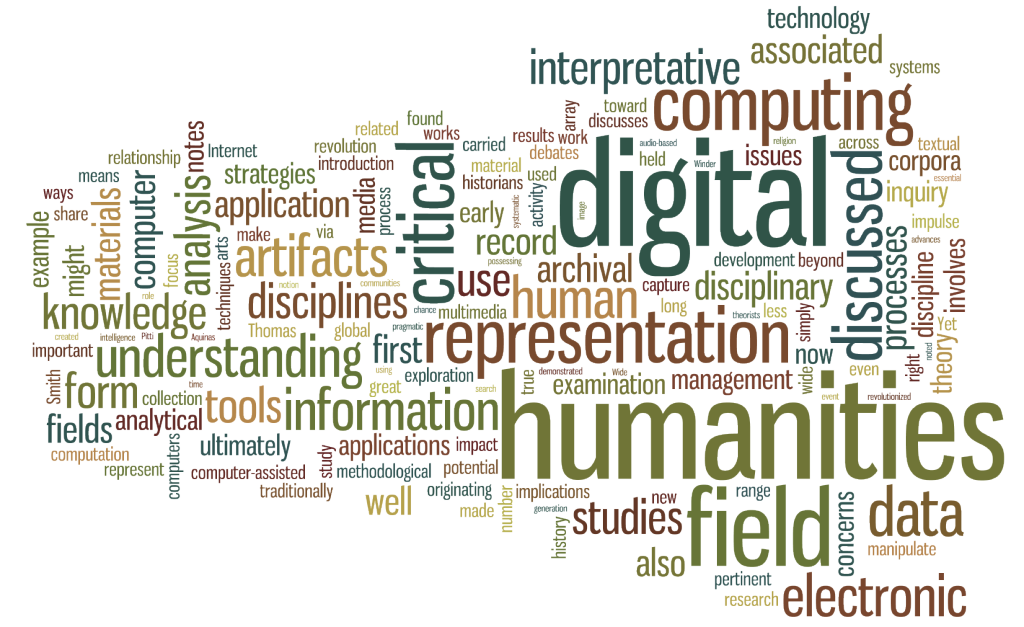 What this strange path has meant, however, is that I have teaching competencies in about fifteen areas, and projects hanging over from almost all my previous jobs. The list of things that I have worked on or want to work on has more entries than I can count. Even once I surfaced from the teaching overload at Leeds, it was clear I couldn't pick most of these up again: trying to keep up with all of Anglo-Saxon kingship, Pictish state formation, numismatics generally and scientific analysis of coins specifically, digital humanities, diplomatic and the burgeoning scholarship on the Carolingian Empire and ninth- to eleventh-century Iberia probably isn't possible even for someone with no other commitments on his or her time, and I have plenty. As I put it a few years ago in a conference bio, I have:
What this strange path has meant, however, is that I have teaching competencies in about fifteen areas, and projects hanging over from almost all my previous jobs. The list of things that I have worked on or want to work on has more entries than I can count. Even once I surfaced from the teaching overload at Leeds, it was clear I couldn't pick most of these up again: trying to keep up with all of Anglo-Saxon kingship, Pictish state formation, numismatics generally and scientific analysis of coins specifically, digital humanities, diplomatic and the burgeoning scholarship on the Carolingian Empire and ninth- to eleventh-century Iberia probably isn't possible even for someone with no other commitments on his or her time, and I have plenty. As I put it a few years ago in a conference bio, I have:
"... picked up research interests at almost every step of this progress, and [have] published on topics as unpredictable as Catalan nunneries, kings in Pictish Scotland, computerised image recognition, Spanish frontier settlement, blogging as a medievalist, comparative early medieval diplomatic and why the Byzantine coinage turned concave in the eleventh century. As if that weren’t enough to drive anyone mad, [I have] articles in press right now [all now out!] on Carolingian-period agricultural productivity, charter-reading parties on the Spanish March, why medieval Mallorca, Malta and la Garde-Freinet were and weren’t like islands and what kind of women could write in tenth-century Catalonia."
So below I describe the projects I'm really actually working on, and then add some notes about those I'd love to do in some future time. But that list could go on a lot longer! Some day, maybe...
Active Research
Power in Catalonia around the Year 1000
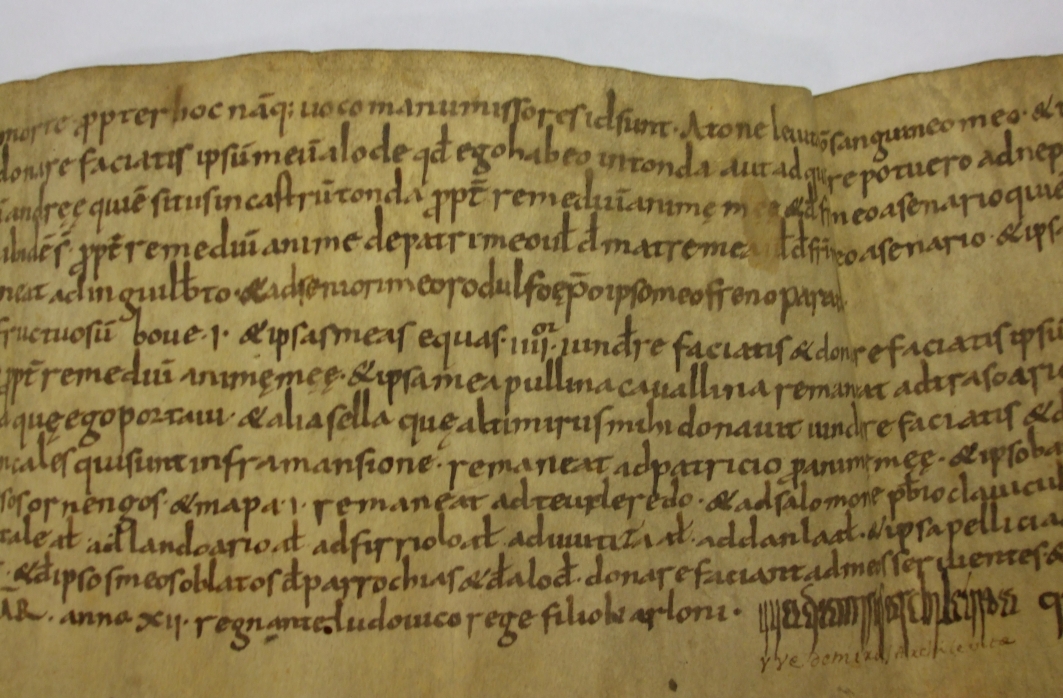 My 'home topic' has been for years and is still the elucidation of power structures and society in Catalonia over the late ninth, tenth and early eleventh centuries, as this area that had been the very edge of the Carolingian Empire, where Christianity met Islam, became almost by default a new and increasingly prosperous polity that would come to dominate the eastern peninsula and much of the Mediterranean. I do this by tracing connections between the holders of power and their delegates and subjects in the prolific charter evidence. This work has so far generated eight published articles or chapters and a rook of conference and seminar papers, all of which are detailed on the Publications page. It also generated my Ph.D. thesis, "Pathways of Power in late-Carolingian Catalonia", which was submitted at the University of London in September 2005, and passed without corrections in March 2006. A revised and improved version of this is now available in the Royal Historical Society's Studies in History series under the title of Rulers and Ruled in Frontier Catalonia 880-1010: pathways of power.
My 'home topic' has been for years and is still the elucidation of power structures and society in Catalonia over the late ninth, tenth and early eleventh centuries, as this area that had been the very edge of the Carolingian Empire, where Christianity met Islam, became almost by default a new and increasingly prosperous polity that would come to dominate the eastern peninsula and much of the Mediterranean. I do this by tracing connections between the holders of power and their delegates and subjects in the prolific charter evidence. This work has so far generated eight published articles or chapters and a rook of conference and seminar papers, all of which are detailed on the Publications page. It also generated my Ph.D. thesis, "Pathways of Power in late-Carolingian Catalonia", which was submitted at the University of London in September 2005, and passed without corrections in March 2006. A revised and improved version of this is now available in the Royal Historical Society's Studies in History series under the title of Rulers and Ruled in Frontier Catalonia 880-1010: pathways of power.
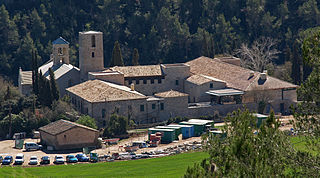 Right now, I am pursuing this field in two directions, more or less alternately. In the first place, I'm trying to expand the brief part of my first book that studied Count-Marquis Borrell II of Barcelona (945-993), under whom the Catalan counties more or less became independent of royal control from the north, such as there by then was. His career makes a splendid illustration of the changes in society at his time and how those in positions of power might respond to them; and lastly a comparative study of the political and patronage strategies of the various counts and rulers of the Spanish frontier as events came to favour their independence. It has run me, however, into a very tangly and underevidenced historiography about the comital family and its marriage practices, so there's an article that has to come first about that. Then, on the other side, I dug for a while into the establishment of the monastery of Sant Benet de Bages, very near the Catalan city of Manresa, and the structures of pastoral care that were set up as the frontier moved out past that city in the tenth century. This has become quite the detective story, involving maps and palæography and lengthy image quests in closed monasteries, and I've become convinced that this is also a book, about how the Church was organised in this new frontier, what priests and monks did in such places and who was making any of this stuff happen. This will hopefully partner my first book quite well and leave me with the area I started in sufficiently well covered that I can start thinking about moving beyond it and comparing.
Right now, I am pursuing this field in two directions, more or less alternately. In the first place, I'm trying to expand the brief part of my first book that studied Count-Marquis Borrell II of Barcelona (945-993), under whom the Catalan counties more or less became independent of royal control from the north, such as there by then was. His career makes a splendid illustration of the changes in society at his time and how those in positions of power might respond to them; and lastly a comparative study of the political and patronage strategies of the various counts and rulers of the Spanish frontier as events came to favour their independence. It has run me, however, into a very tangly and underevidenced historiography about the comital family and its marriage practices, so there's an article that has to come first about that. Then, on the other side, I dug for a while into the establishment of the monastery of Sant Benet de Bages, very near the Catalan city of Manresa, and the structures of pastoral care that were set up as the frontier moved out past that city in the tenth century. This has become quite the detective story, involving maps and palæography and lengthy image quests in closed monasteries, and I've become convinced that this is also a book, about how the Church was organised in this new frontier, what priests and monks did in such places and who was making any of this stuff happen. This will hopefully partner my first book quite well and leave me with the area I started in sufficiently well covered that I can start thinking about moving beyond it and comparing.
Rethinking the Medieval Frontier
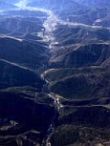 Comparison is at the heart of my second active project, which is one that grew out of my experience of working on a frontier zone and finding that the only common structures of interpretation for such environments were things based on the Roman limes or the nineteenth-century American West. Medievalists could do better than this, I thought, especially given how complicated some of our frontiers are. So, as has been my habit before now, I organised a few sessions about these issues at the International Medieval Congress at Leeds, and then got a British Academy/Leverhulme Trust Small Research Grant to do a bit more than that, building a network of like-minded scholars to meet and organise conferences on the theme. This leaves me editing another volume of essays from the first conference, as well as the one from the IMC sessions... Eventually there will be a monograph in which all this theorising and comparison comes together as a new synthesis, or such is my hope. We'll see how that works out!
Comparison is at the heart of my second active project, which is one that grew out of my experience of working on a frontier zone and finding that the only common structures of interpretation for such environments were things based on the Roman limes or the nineteenth-century American West. Medievalists could do better than this, I thought, especially given how complicated some of our frontiers are. So, as has been my habit before now, I organised a few sessions about these issues at the International Medieval Congress at Leeds, and then got a British Academy/Leverhulme Trust Small Research Grant to do a bit more than that, building a network of like-minded scholars to meet and organise conferences on the theme. This leaves me editing another volume of essays from the first conference, as well as the one from the IMC sessions... Eventually there will be a monograph in which all this theorising and comparison comes together as a new synthesis, or such is my hope. We'll see how that works out!
Numismatics and Archæometallurgy
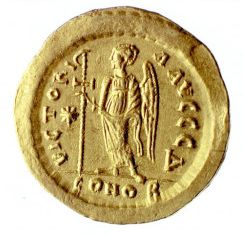 As the first section of this page probably makes clear, I never meant to become a numismatist. Periodically I try to get away from the field, but get sucked back in either by employment, by an unattended coin collection that needs someone to look after it (more common than you'd think) or by just how cool coins are to teach with. But mainly, while I was Interim Coin Curator at the Barber Institute, not only did I promise to publish bits of the collection there that I never managed to, but I got involved in a really cool project which we called All That Glitters: the Byzantine solidus 300-1092, about the metal content of Byzantine solidi as exposed by unexpectedly-available X-ray fluorescence machinery. We did not get the results from that project that we might have hoped, but the reasons for that were themselves significant, and should some day make at least an article and a very shiny book. This requires the coordination of five or six people with quite different career paths and priorities, so the timescale for this is at best a bit unclear, but it will be very nice when it's done, and done it must be, because I promised! (This rationale has led me into so many impossible commitments that I should really know better by now...)
As the first section of this page probably makes clear, I never meant to become a numismatist. Periodically I try to get away from the field, but get sucked back in either by employment, by an unattended coin collection that needs someone to look after it (more common than you'd think) or by just how cool coins are to teach with. But mainly, while I was Interim Coin Curator at the Barber Institute, not only did I promise to publish bits of the collection there that I never managed to, but I got involved in a really cool project which we called All That Glitters: the Byzantine solidus 300-1092, about the metal content of Byzantine solidi as exposed by unexpectedly-available X-ray fluorescence machinery. We did not get the results from that project that we might have hoped, but the reasons for that were themselves significant, and should some day make at least an article and a very shiny book. This requires the coordination of five or six people with quite different career paths and priorities, so the timescale for this is at best a bit unclear, but it will be very nice when it's done, and done it must be, because I promised! (This rationale has led me into so many impossible commitments that I should really know better by now...)
Some-Day Research
The pile of stuff I have at one point worked on, because of employment or inclination or both, and half-finished, could be extended a lot longer than this but here are some of the obvious contendors:
- a volume of translated sources for Christian and Muslim Spain in the period 711-1212, related in no small way to a course I teach on that very thing;
- an article about one particular rebel who broke the Carolingian hold on the Catalan frontier, but about whom we know very little;
- an article trying to resituate the bishops of c. 1000 Catalonia, who are often stereotyped as being interrelated aristocrats running the local Church like a family club, in the wider context of a Western Church learning what the word 'reform' could do and achieve; it may not surprise you to learn that there was less truth to this than you would find in, for example, Richard Southern's Western Society and the Church in the Middle Ages... ;
- an article or chapter looking at archives of charters that go back beyond the history of the institution that preserves them, and how that happens;
- a book of translated charters from the abbey of Sant Joan de les Abadesses, to give us something that looks like these really important and prevalent sources for the Middle Ages that students can actually read and appreciate;
- an article arguing that a recent set of papers reading Catalan place-names based on the Latin word for 'palace' reflects not, as has been argued in those papers, the location of Muslim garrisons but rather Roman villas on the sites in question;
- an attempt, probably in article form, to show that Pictland was a kingdom stitched together from a number of polities of different origins that were somehow induced all to subscribe to a common idea of élite culture and membership;
- most ambitiously, a co-written monograph on the effects of Muslim conquest in the Near and Middle East based not on the problematic texts, all later or written from outside, but the coins, which tell a very different and more complex story than the triumphalist writing of the ninth century does...
It's all a bit much, isn't it? We'll see how much of it ever comes about...
Past Projects
It's probably also worth mentioning some of the things I already did, and eventually put aside for reasons of getting a different job.
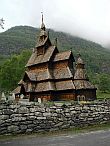 I copy-edited about half the texts for the web component of Christianization and State Formation in Northern and Central Europe c. 900-c. 1200 project at the Centre for Research in the Arts, Social Sciences and Humanities, Cambridge, which is now online here.
I copy-edited about half the texts for the web component of Christianization and State Formation in Northern and Central Europe c. 900-c. 1200 project at the Centre for Research in the Arts, Social Sciences and Humanities, Cambridge, which is now online here.
 I constructed, redesigned and filled a database for a project entitled Mobility and Meetings of Spanish People in the Tenth Century under Professor Wendy Davies at University College London.
I constructed, redesigned and filled a database for a project entitled Mobility and Meetings of Spanish People in the Tenth Century under Professor Wendy Davies at University College London.
 I was for a while involved in the Lay Archives Project, funded by the British Academy and Leverhulme Trust. As well as massing and recording data for other parts of the project, I constructed a database of known pre-900 lay documents in ecclesiastical archives, but this was not eventually used by the project authors. The book of the project was finally published in 2013, however, and is a marvellous thing even if I'm not in it.
I was for a while involved in the Lay Archives Project, funded by the British Academy and Leverhulme Trust. As well as massing and recording data for other parts of the project, I constructed a database of known pre-900 lay documents in ecclesiastical archives, but this was not eventually used by the project authors. The book of the project was finally published in 2013, however, and is a marvellous thing even if I'm not in it.
 While working at the Fitzwilliam Museum, I catalogued and put online the Museum's collection of Korean coins, the gold and silver ones among its Roman Imperial coins, the various items in the Watson Medals Collection, the Queens' College Collection, the Wyon Collection of medals, the traders' tokens from the Mossop Collection, the Museum's entire collection of 18th and 19th-century tokens, the Rogers Collection of toy coins and the ancient coins from the Ritchie Post Collection, and I managed a team that catalogued and imaged the Chinese coins in the collection, which I then put online. (The search system used to be more precise; these links are now (as of 2021) the best I can do to isolate my work.) Some time between 2017 and now they seem also to have put online my last upload, which was actually my first, a cleaned-up presentation of work largely done by my predecessor, Evangeline Markou, which included the Barker Collection of Greek coins and I now couldn't tell you what else; but I'm very glad it's now up! I was also responsible for copy-editing the forthcoming catalogue of the Department's coins of the Mughal empire by Sanjay and Nurassa Garg, and two volumes of the Medieval European Coinage series, and for maintaining, cleaning and updating the Corpus of Early Medieval Coin-Finds and Sylloge of Coins of the British Isles databases, from which I also generated electronically the initial text for the 2006 through 2010 editions of "Coin Register" in the British Numismatic Journal.
While working at the Fitzwilliam Museum, I catalogued and put online the Museum's collection of Korean coins, the gold and silver ones among its Roman Imperial coins, the various items in the Watson Medals Collection, the Queens' College Collection, the Wyon Collection of medals, the traders' tokens from the Mossop Collection, the Museum's entire collection of 18th and 19th-century tokens, the Rogers Collection of toy coins and the ancient coins from the Ritchie Post Collection, and I managed a team that catalogued and imaged the Chinese coins in the collection, which I then put online. (The search system used to be more precise; these links are now (as of 2021) the best I can do to isolate my work.) Some time between 2017 and now they seem also to have put online my last upload, which was actually my first, a cleaned-up presentation of work largely done by my predecessor, Evangeline Markou, which included the Barker Collection of Greek coins and I now couldn't tell you what else; but I'm very glad it's now up! I was also responsible for copy-editing the forthcoming catalogue of the Department's coins of the Mughal empire by Sanjay and Nurassa Garg, and two volumes of the Medieval European Coinage series, and for maintaining, cleaning and updating the Corpus of Early Medieval Coin-Finds and Sylloge of Coins of the British Isles databases, from which I also generated electronically the initial text for the 2006 through 2010 editions of "Coin Register" in the British Numismatic Journal.
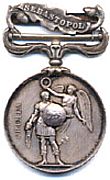 Also while at Coins and Medals, I created a number of online resources and exhibitions, but those are listed under my Publications. Anything I was able to put on the Fitzwilliam's website, however, especially the earlier pieces, I did so with considerable help from the Museum's Computer Manager Shaun Osborne and the Computer Assistant and later Computer Officer Dave Gunn. None of this really features in my medieval research, but I found it interesting and hope that the casual browser might do so too.
Also while at Coins and Medals, I created a number of online resources and exhibitions, but those are listed under my Publications. Anything I was able to put on the Fitzwilliam's website, however, especially the earlier pieces, I did so with considerable help from the Museum's Computer Manager Shaun Osborne and the Computer Assistant and later Computer Officer Dave Gunn. None of this really features in my medieval research, but I found it interesting and hope that the casual browser might do so too.